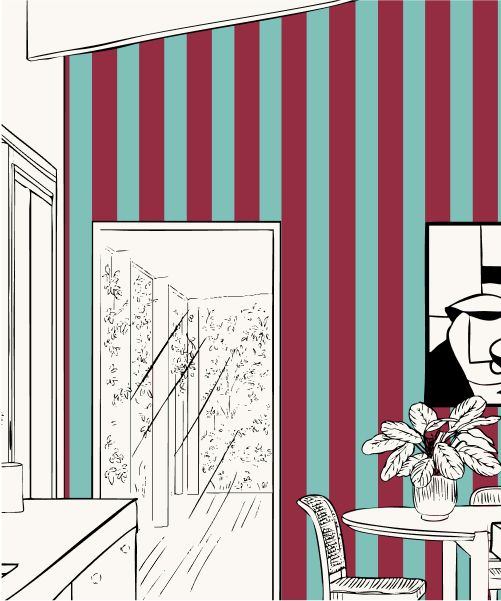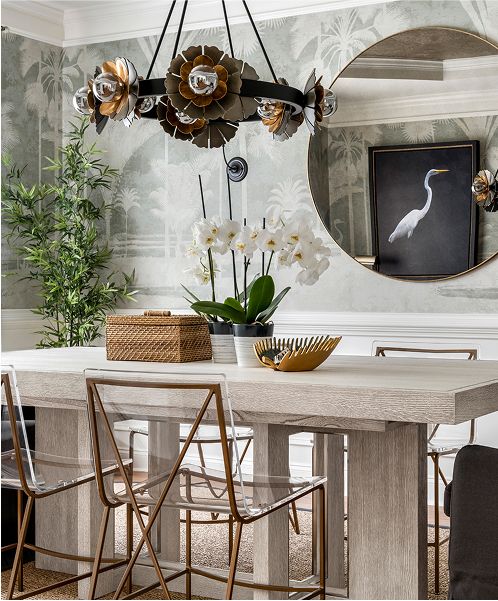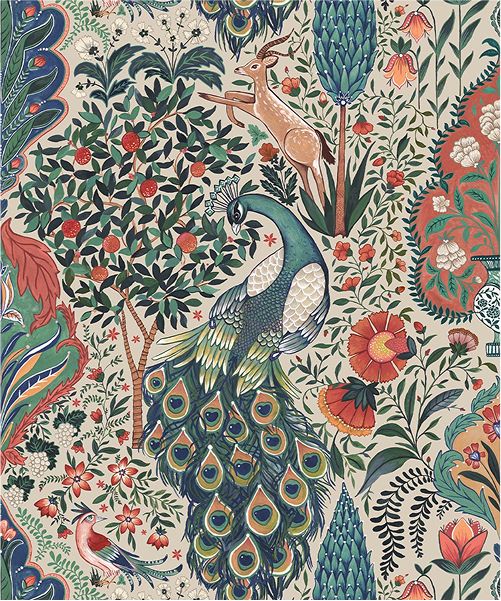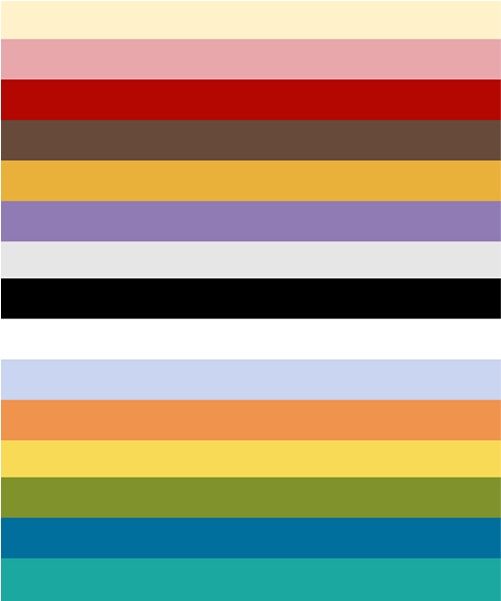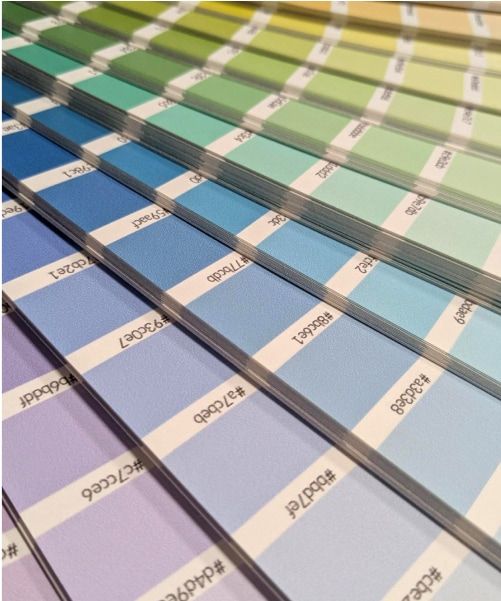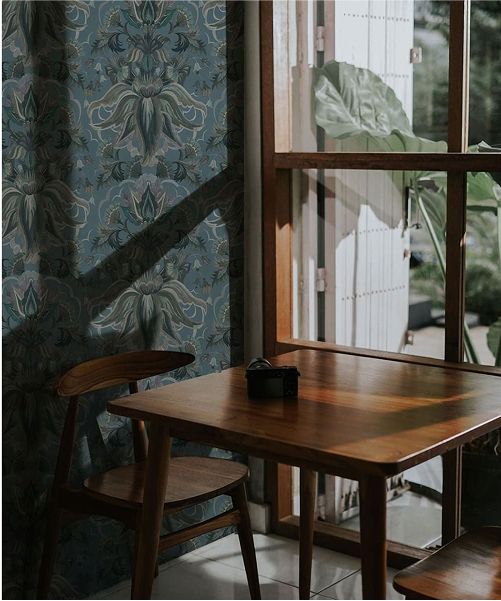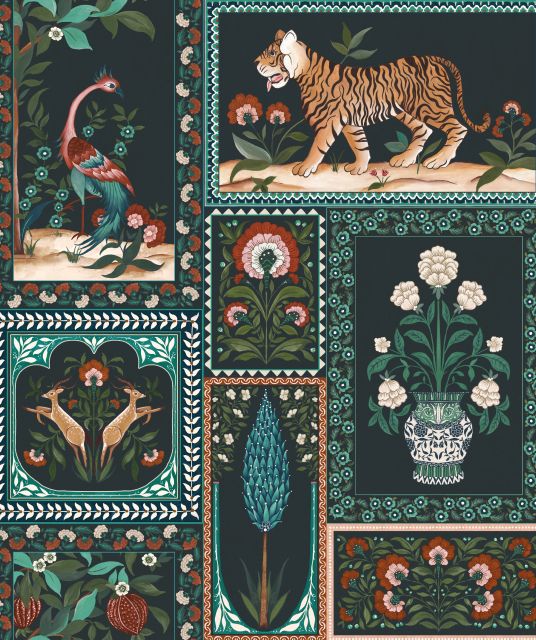Herbarium Antique Wallpaper photo courtesy of Alieta Casey
First, to make life much easier, Milton & King has a very handy wallpaper calculator on each product design page. You can enter the height and length of each wall. The pattern repeat of the design will automatically populate and it will tell you how much wallpaper you need. This will work for most of our wallpapers except for murals and panel designs.
If you would like a greater understanding of what goes into calculating how many wallpaper rolls you need, we’ll go through some important terms that might help you wrap your head around how the amount of wallpaper is determined.
Below you will see an image from a typical product page. Indicated is the Wallpaper Calculator button and below is info on the Pattern Repeat and Pattern Match.
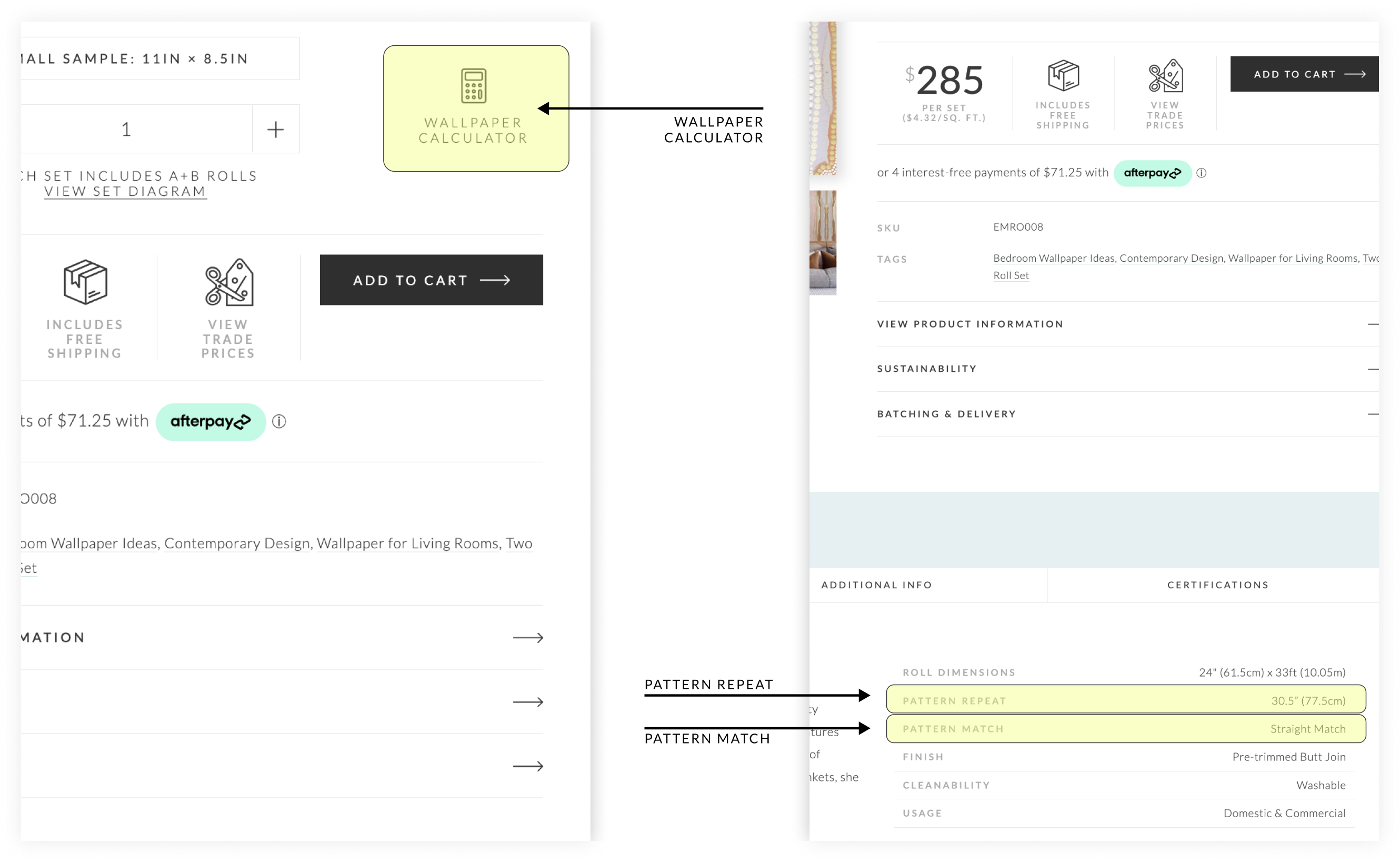
How To Measure The Room
When you are taking the measurements of your room, ignore obstacles like windows and doors. You might think you can subtract the areas that won’t have wallpaper. Do not subtract these areas from your measurements. You will be matching the wallpaper pattern over and under windows, and over and down the side of doorways. So just be sure to take the overall height and length of each wall, treating each wall as solid from top to bottom and from side to side. These open areas should be considered wallpaper wastage. If you subtract those areas from your calculations, you may find yourself underestimating the amount you need.
SLOPES and ANGLES
What if my wall is sloped? While some may suggest taking the middle measurements as the height, we recommend treating the highest point of your wall as the overall height. Having leftover wallpaper is better than not having enough.
When you pull up the calculator, you’ll be prompted to enter the height and the width of your walls. You can add walls by clicking the + sign. Here is an example…
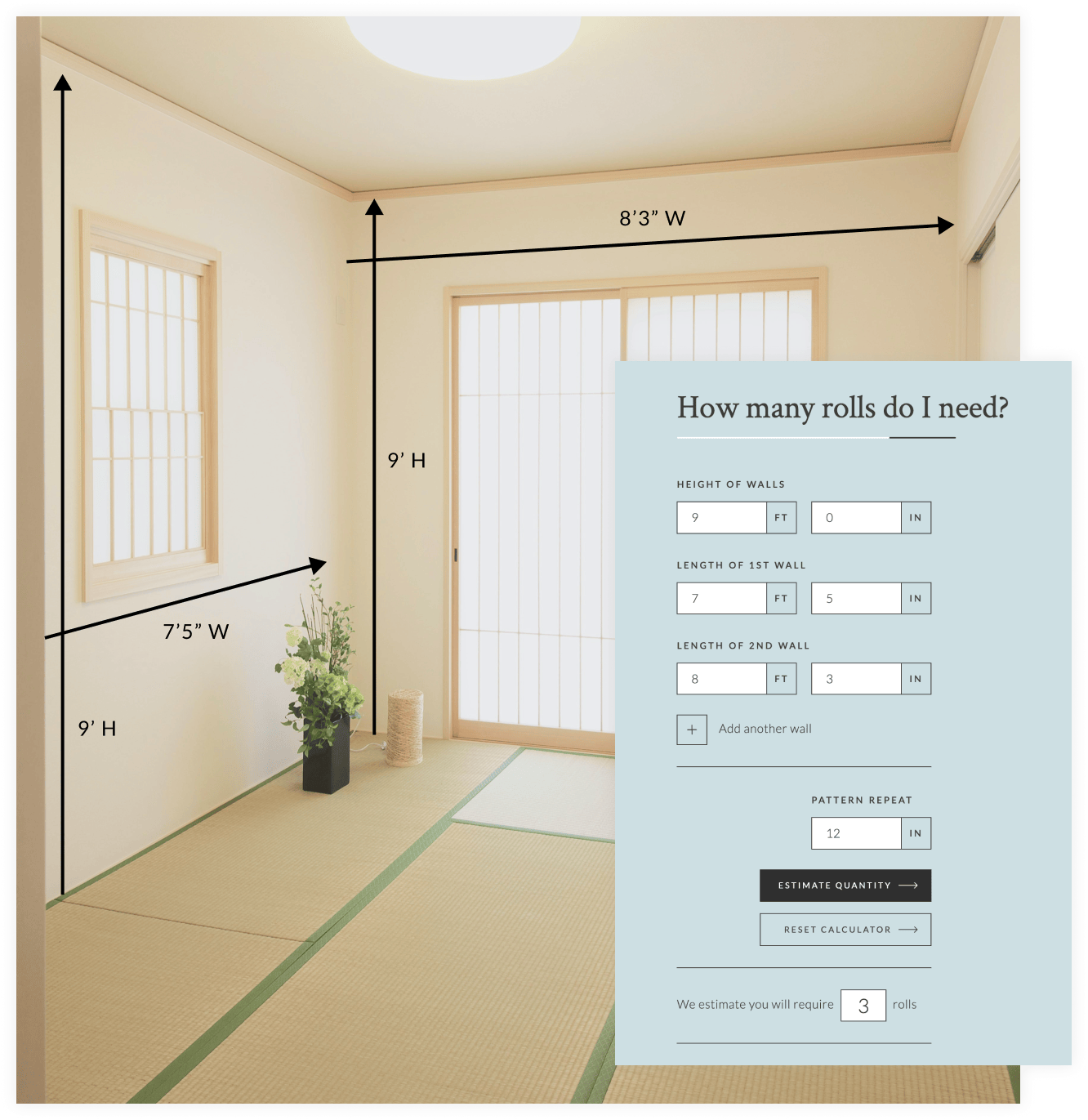
Try it for yourself! Wallpaper Calculator
How many rolls do I need?
WARNING: DO NOT USE SQUARE FOOTAGE WHEN CALCULATING HOW MUCH WALLPAPER TO PURCHASE.
Many wallpaper installers prefer this quick and easy way to estimate your wallpaper. You determine the square footage of your wall and divide by the square footage of the roll to determine the number of rolls you need.
FOR EXAMPLE, most of our rolls are 32.9 ft long by 2 feet wide, roughly covering 64 to 66 square feet. (murals excluded)
If you have two walls that are each 10ft high by 12 feet wide, you determine the square footage with this equation: (10ft x 12ft) + (10ft x 12ft) = 240 square feet.
Then you divide 240 square feet by 64 square feet and you get 3.75. So roughly, you would need 4 rolls to cover that area.
However, this does NOT take into account the pattern repeat of the design and how much wallpaper you may lose with every panel you install. There are also other factors that affect how much wallpaper you use, like how you hang your first panel. For example, if you overlap your initial panel of wallpaper 1 centimeter or 1 inch at the top or side edge of the wall, this can make quite a difference over the course of the installation. Every bit counts. You should always make efforts to be economical with your install.
Alternatively, a wallpaper installer that isn’t familiar with a manufacturer’s specific roll dimensions may assume to know the roll size and grossly over estimate what you need. It is important to gather the information from the manufacturer’s website.
And as previously mentioned, most designs have some form of pattern repeat, people who end up calculating from a square foot estimate often risk coming up short, requiring the purchase of more wallpaper that may or may not match what has already been installed. Estimating by square footage is a handy tool for early in the process to get a general idea, but not when it comes to clicking the BUY button.
What does Pattern Repeat mean?
The pattern repeat tells you the size of the design on a portion of wallpaper and how long it goes before it repeats. Some designs consist of small birds, leaves or tiles that can repeat as much as every 1.9 inches. Some designs are larger and repeat every 2 feet. This means as you match the wallpaper up, side by side, you will have more wallpaper waste. Therefore, you will need more wallpaper of a design with a large pattern repeat to cover your walls effectively. For more on pattern repeat, check out our blog: Wallpaper Pattern Repeat – Why Is It Important?
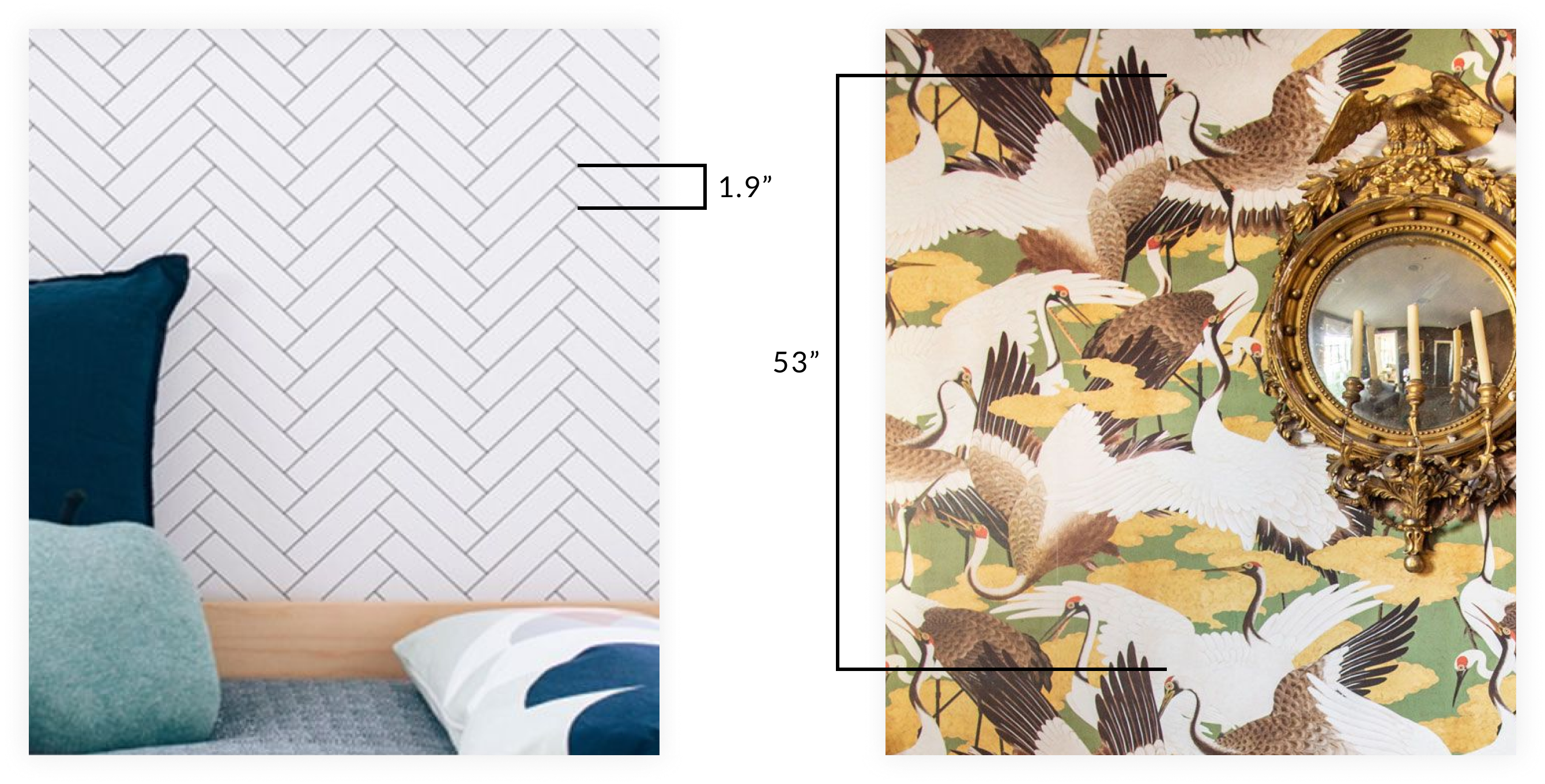
Straight Match, Free Match, Offset Match… what’s the difference?
FREE MATCH means you don’t need to match one drop/panel of wallpaper with the next drop/panel of wallpaper. Many times, shiplap style wallpaper will be free match because, as the strip of wallpaper is cut along the vertical wood slat, you can hang the next drop of wallpaper without having to match the previous drop. The pattern repeat doesn’t matter. This cuts down to almost nothing the amount of wastage you will have when installing your wallpaper.
STRAIGHT MATCH means the left and right edge of one drop of wallpaper will match with the left and right edge of the next drop of wallpaper and the pattern will line up horizontally across the wall.
OFFSET MATCH means the right edge of first strip only matches the edge of the next strip at a specified distance. For example, a 24/12cm offset match means the design repeats every 24cm and the point at which they match, from left to right, is every 12cm. In simpler terms, the horizontal pattern of the design repeats diagonally. So instead of the bird on panel two being the same height as panel one, it will appear a bit further down on drop 2. This helps a wallpaper pattern to not feel so repetitive.

It’s always a good idea to have more wallpaper left over than not enough. Why? Because accidents happen and because DIYers may make simple mistakes that might require a patch up. It’s better to be prepared with a little extra than run short. It’s not always easy to just order more if it’s needed. You can run into issues with color matching if the new paper is from a different batch. Knowing how many rolls of wallpaper you need has never been easier. Now, if you’re ready to take your new knowledge and shop for wallpaper, then let’s do this!
